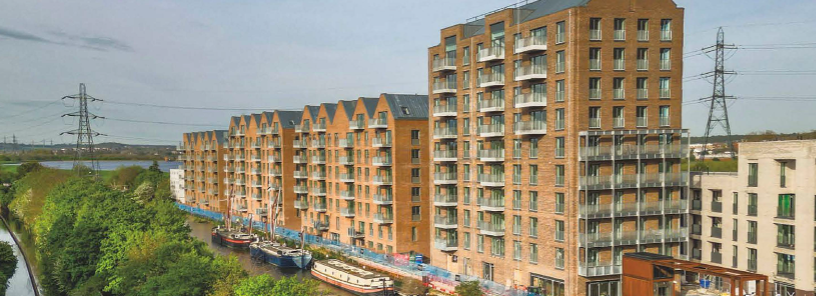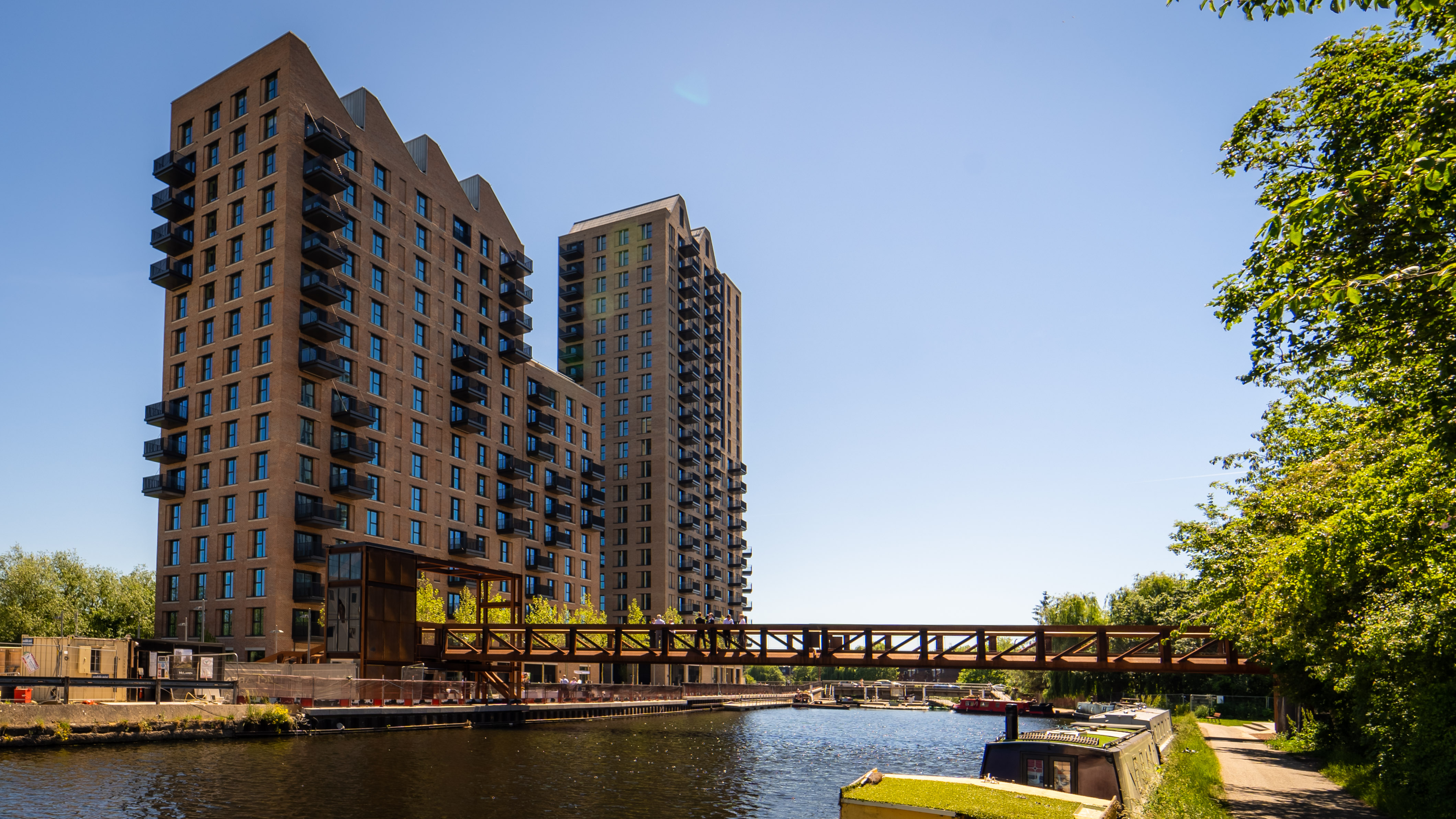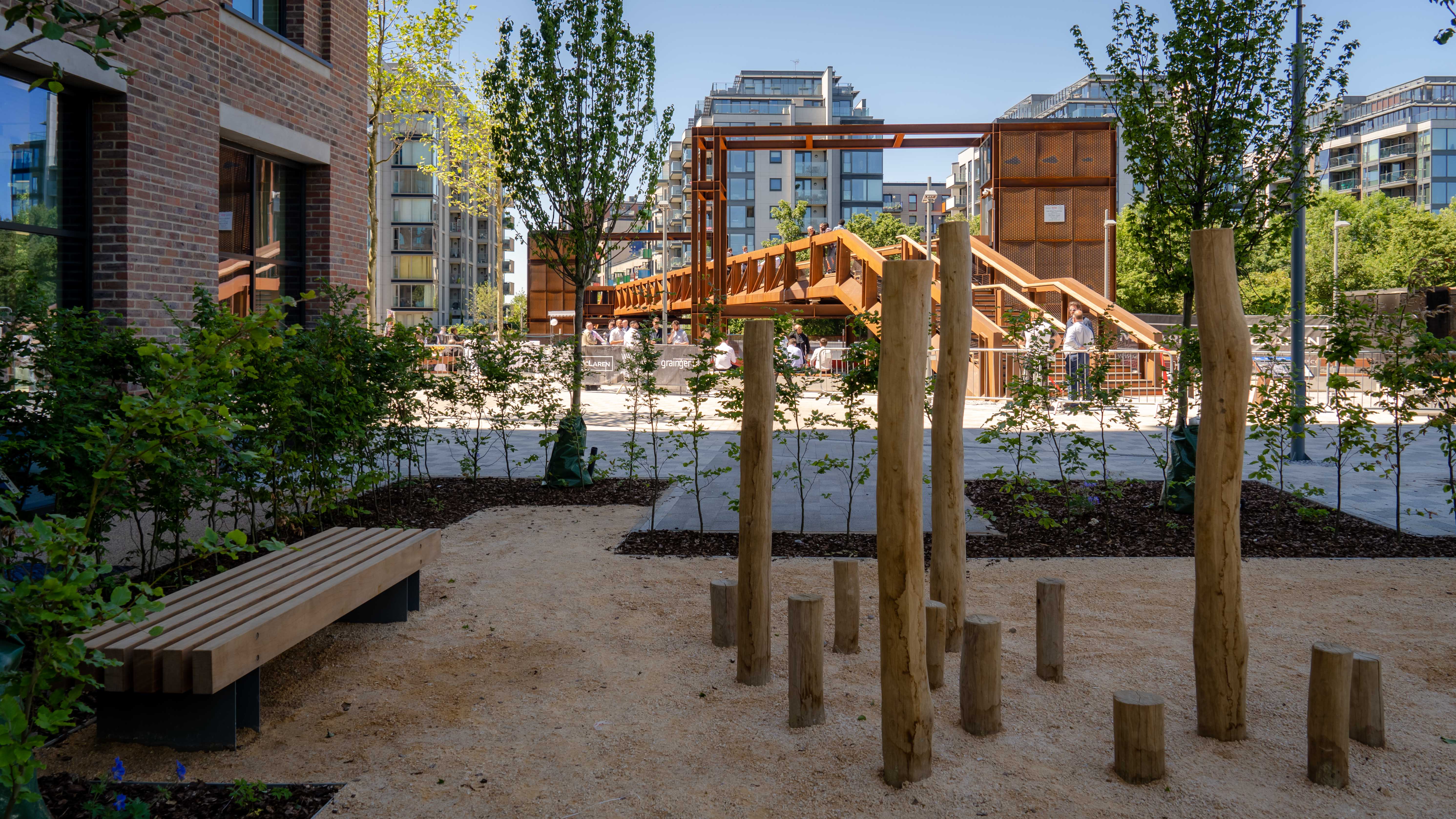Get updates from The Developer straight to your inbox Yes, please!
Building bridges to biodiversity
Isabelle Asante, senior development manager at Muse, on its joint venture at Hale Wharf where a diverse mix of new homes includes a new bridge across the River Lea Navigation linking to a 10-acre area of green space connecting local people with nature.
In one of the capital’s lesser-known nature reserves you will find a diverse mix of green and blue space spanning 10 acres in Zone 3. Located within the London Borough of Haringey, the Paddock Community Nature Reserve is formed of a diverse environment of woodland, scrub, meadow, ponds and surrounding rivers that support a range of mammals, birds, insects and plants. It spreads out on the opposite side of the Lee Navigation to a site where Waterside Places is introducing a diverse mix of new homes in the waterside area that is Hale Wharf Knowing the significance of green space like the Paddock within a densely populated area like Tottenham Hale, the project team recognised the importance of looking beyond the red lines and how to connect its existing and emerging community to this space, improving accessibility.
The question wasn’t if a bridge could be built to connect local people to nature, but how. Hale Wharf is being delivered by Waterside Places - a strategic joint venture between Canal & River Trust and Muse - in partnership with the Mayor of London and the London Borough of Haringey.
The wider scheme is one of the Mayor of London’s Housing Zones, with 505 homes being delivered, of which 191 are classified as affordable rent. Hale Wharf is making an important contribution to the mayor’s and the Greater London Authority’s aspiration for 2,000 new homes in the borough. As with all Waterside Places developments, the water’s edge will be regenerated thanks to upgrades of access routes for commercial barges as well as canal wall repairs and the addition of floating reed beds.
In 2021, the first phase of 249 new mixed-tenure homes was completed along with the new Hale Wharf Bridge, which now provides a vital link between Hale Wharf and the Paddock. This bridge is also an important piece of infrastructure, providing energy to the site from the nearby Hale Village. The brand new, architecturally striking, accessible Hale Wharf Bridge has created value for the community in many ways but not least through safety. Previously, those looking to access Tottenham Hale from Hale Wharf on foot had to walk along Ferry Lane, a busy road which was poorly lit and unwelcoming at times.
Since the bridge opened, the local community are more likely to cross the River Lee Navigation and enjoy Hale Wharf, and vice versa. Residents have felt safer in the area, all contributing to a better quality of life in Tottenham Hale and encouraging people to walk to the Paddock and reap the benefits of spending time in nature.
Reconnecting communities with nature Recently, the mayor’s New London Plan has outlined how a well-planned and managed green infrastructure network will be vital in helping the city stay healthy and liveable as the population continues to grow, adding pressure for land to build good quality homes, schools, hospitals and places of work, with up to three million more people expected to live in the capital by 2050. Locations like the Paddock provide an immeasurable amount of value to communities that surround them - but it is vital that they are safe, accessible and well maintained.
“Since the bridge opened, the local community are more likely to cross the River Lee Navigation and enjoy Hale Wharf, and vice versa. Residents have felt safer in the area, all contributing to a better quality of life in Tottenham hale and encouraging people to reap the benefits of spending time in nature”
The Paddock had been in a state of disrepair for several years and, as a result, the Conservation Volunteers were appointed to manage the the site from November 2020, now employing two full-time members of staff that carry out practical management, surveying, and engagement with locals.
One of the key objectives during planning discussions for the Hale Wharf was the creation of a new pedestrian bridge directly to the Paddock to activate the site and ensure a pedestrian link between Tottenham Hale Station and the Paddock. In addition, through the Section 106 Agreement, the scheme provided contributions for the delivery of significant upgrades to the Paddock, including the removal of Japanese Knotweed, enhancements to the woodland habitat to extend the ecology, and provision of an educational facility and volunteers hub.
In late 2023, representatives from Muse, McLaren Construction and Stace LLP took part in a day of impactful volunteering, supporting the conservation volunteers in clearing and maintenance of the site.
Thanks to the ongoing work from the Conservation Volunteers, it has now been developed as a haven of calm for birds, trees, flowers and members of the public. The result is a peaceful getaway of woodland, crammed with hawthorn, elder, buddleia, wild geraniums, purple flowering comfrey, white daisies and pink dog roses. The Paddock and other green infrastructure across Haringey are helping to reduce the impact of climate change on the lives of residents and help Haringey Council reach its ambitious 2041 net-zero targets.
Vegetation has been shown to reduce the effects of raised urban temperatures through evaporative cooling, shading surfaces and allowing natural drainage. Nearby trees also contribute to the capture and storage of CO2 and the improvement of air quality. As well as vegetation, the presence of open bodies of water, such as ponds and the Lee Navigation, can assist with the cooling of surrounding areas and in reducing daytime temperatures.
It isn’t just the environment that benefits; people do too. According to Public Health England, there is evidence regarding the relationship between exposure to, use of and perceptions of green space and several positive mental and physical health outcomes. These include a reduction in psychological stress, fatigue, anxiety and depression, promotion of better subjective well-being, and various improved physical health factors.
Supporting community spaces
Beyond the green space that is being enhanced at the Paddock, Muse has engaged with other key community locations in Tottenham Hale including the Engine Room. Opened in 2017, the Engine Room serves an ever-expanding multicultural community with a church, community centre, cafe and nursery. At the time of construction, St Francis was the first purpose-built church in London in 40 years and it has gone on to develop an active schedule of worship and community activity that sees over 500 people use the space each week.
At Christmas, Muse donated three bags of Christmas presents to the Engine Room, which were gifted to local children in Tottenham Hale Village, and supported its annual Christmas Party. The project team at Muse has remained active within the local community throughout construction, with them sponsoring and set to take part in the Tottenham 10km run in June 2024.
“As well as vegetation, the presence of open bodies of water, such as ponds and the Lee Navigation, can assist with the cooling of surrounding areas and in reducing daytime temperatures”
To encourage art and active living in the area, Muse is set to expand the North London Hospice and Wild in Art’s Big Fun Art Adventure, which will bring an exciting and free art sculpture trail to north London for families to enjoy. More than 30 giant owl sculptures, alongside a parliament of 30 smaller owlets designed by local schools and community groups, will hide in plain sight on the streets and in the parks this summer, set to arrive in August for eight weeks.
Muse is sponsoring its own owl, which will be homed adjacent to the Paddock Bridge. The project team hopes it will encourage footfall from Tottenham Hale and beyond to the Paddock and across the Hale Wharf Bridge, showcasing the improvements of the area and its biodiversity. The owl will be later auctioned to raise money for the North London Hospice.
Building bridges
Hale Wharf exemplifies how thoughtful infrastructure can bridge the gap between urban progress, preservation of natural landscapes and improving the day-to-day lives of local people, to ultimately create a more holistic and inviting place to live.
Find out more: museplaces.com/our-places/hale-wharf-tottenham
If you love what we do, support us
Ask your organisation to become a member, buy tickets to our events or support us on Patreon
Sign up to our newsletter
Get updates from The Developer straight to your inbox
Thanks to our organisation members
© Festival of Place - Tweak Ltd., 124 City Road, London, EC1V 2NX. Tel: 020 3326 7238
© Festival of Place - Tweak Ltd., 124 City Road, London, EC1V 2NX. Tel: 020 3326 7238


